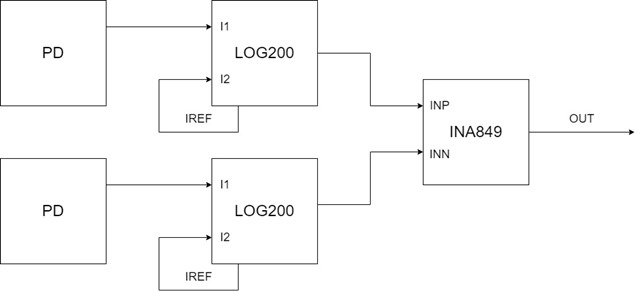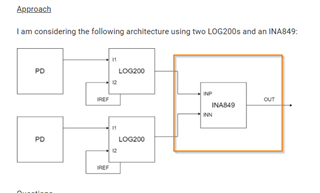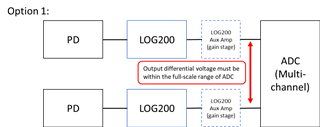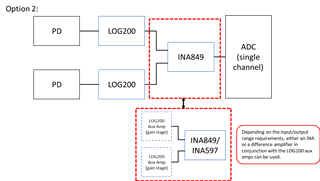Other Parts Discussed in Thread: LOG114, INA849
Tool/software:
Hi there,
I have a quick question surrounding log ratio amplification using the LOG200, details given below.
Best regards,
Tim
Background
Our application requires high bandwidth measurement of two photodiodes.
The older LOG114 was designed with this in mind, since it offered essentially identical performance on either input.
I understand that the LOG200 has input asymmetry; one high accuracy input and one high bandwidth input. However, I would like to make use of the increased bandwidth, adaptive biasing, and improved log conformity when compared to the LOG114.
Approach
I am considering the following architecture using two LOG200s and an INA849:

Questions
Is this likely to yield better performance than a single LOG114?
Do you think there is a better suited approach?




